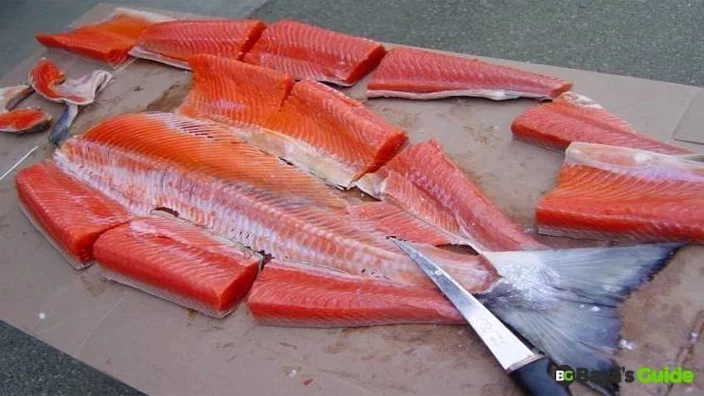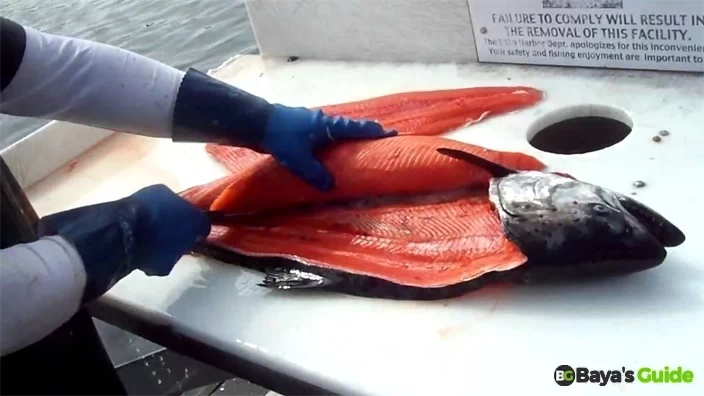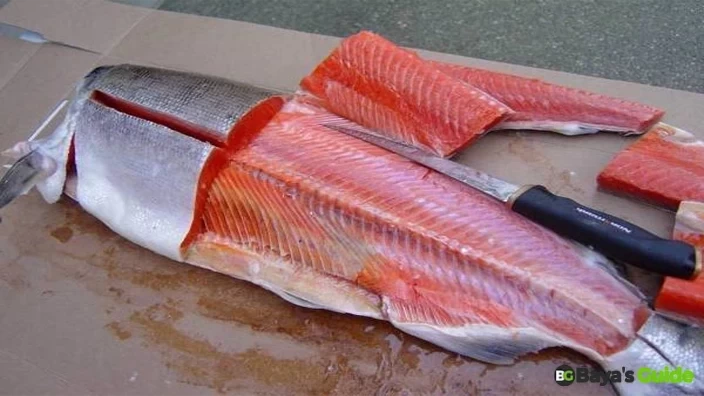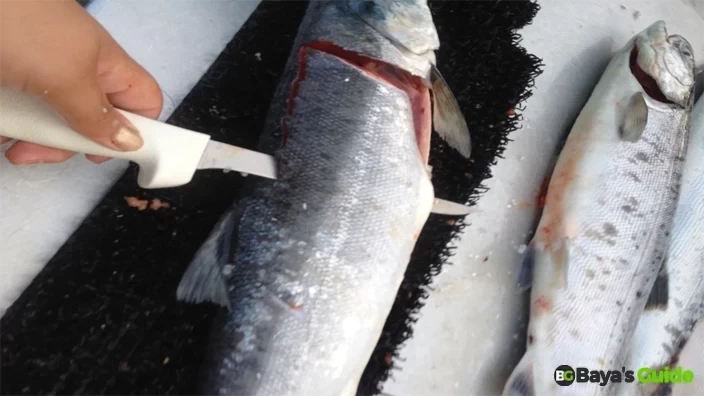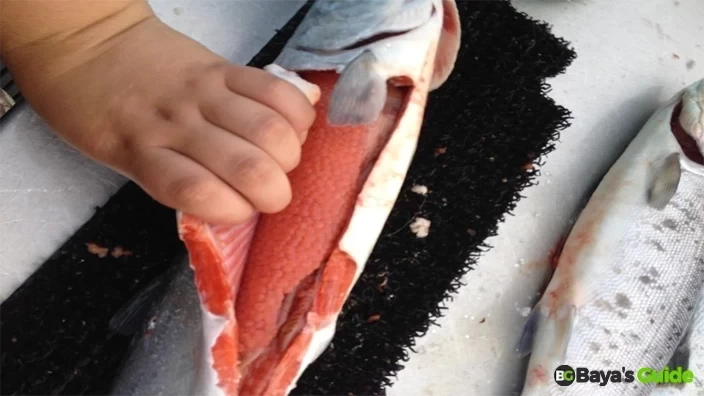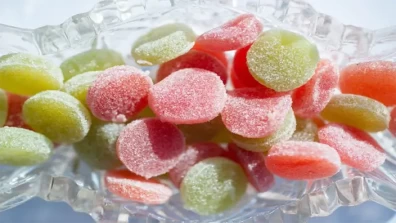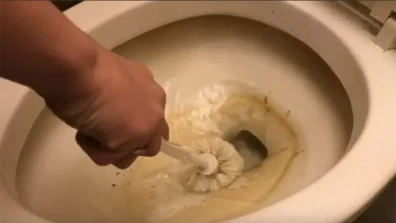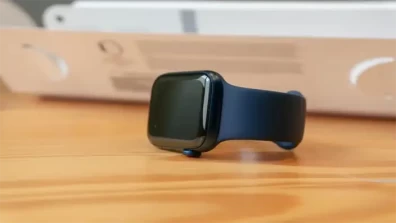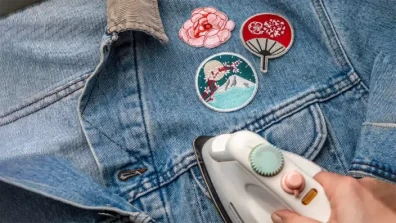The fish-cleaning art is one of the essential parts of the process of salmon cooking. It is not only about cooking the meal but more about becoming an artist through this journey. Obtaining the best quality salmon not only guarantees your delicious meal but also portrays your culinary skills. Brace yourself for a seafood quest that is not just about savoring but also a gastronomic stage from your pantry to the dining hall.
In Canada, the survey revealed that 79% of Canadians eat Salmon, with 10% consuming it every week. In Australia, close to 25% of Australians aged 14 and above eat Salmon in a week. Eating Salmon offers loads of health advantages, including omega-3 fatty acids that prevent heart disease and support cardiovascular health. Abundant with protein, vitamins, and selenium, Salmon helps to decrease the risk of cardiovascular disease, provide protein intake, and improve overall health. So, start eating Salmon by knowing its cleaning process in this step-by-step guide.
Table of Contents
Why Is It Essential To Clean Salmon Before Cooking?
Fishes, including salmon, have lots of health benefits; however, they often contain waterborne bacteria and contaminants on their skin, like pathogens. These bacteria can cause potential health concerns such as food poisoning or digestive issues. Thus, to ensure the safety and quality of your meal, it is vital to clean the fish before cooking. The cleaning process also removes any foul odors or impurities that may be present, enhancing the overall taste and presentation of the delicious salmon.
How To Clean Whole Salmon?
If you have a whole salmon as a raw fish, either from a local fisherman or the supermarket, you should clean it to ensure it is safe to consume. Here is how to clean the whole salmon:
1- Gather Materials
First up, you will need to gather all the materials required for the cleaning process. These basic tools include:
- Cutting Board
- Sharp Knife
- Tweezers
- Paper Towels
2- Remove Scales
The very first step to cleaning salmon is removing those sneaky silver scales. You can do so with the help of these steps:
- Take a knife and create a small, shallow incision just beneath the gills, running along the belly of the fish.
- Gently begin to peel the skin away from the cut, gripping it firmly as you pull it off the fillet or steak.
Pro Tip: Smoothly remove the skin, ensuring that it is not to cut into the flesh accidentally.
3- Clean The Inner Part
Next up, you will need to clean the inner part of the salmon. For this task, you can either use your fingers or a long fork. Concerning the procedure, you just have to remove the guts and clean off the bloodline in the fish. Afterward, rinse off the fresh salmon with cold water to remove the remaining blood, scales, or guts. If you feel uncomfortable doing so, you can also ask your local fisherman for help.
Pro Tip: While taking off guts, be sure not to blast the gallbladder, as this can ruin your meal.
4- Cut Off Head & Tail
With the majority of debris removed, it is time to cut the head and tail of your salmon. Here is how to do so:
For Removing Head
- Place the cleaned salmon on your cutting board with its head facing away from you.
- Use a sharp boning knife to make a clean cut just behind the head, ensuring you remove it completely. For this purpose, you have to keep your knife parallel to the table. You have to do so to remove as much fish meat as possible.
For Removing Tail
- Flip the salmon around so the tail is now facing you.
- Trim off the tail fin with your knife, making a straight cut.
Remember, the head and tail of salmon can be good to use in preparing fish stock or broth, which can serve as a foundational ingredient for soups, sauces, and risottos. So, if you plan to use these parts in a recipe, do not discard them thoughtlessly.
5- Rinse & Pat The Salmon Dry
After removing the head and tail, rinse the entire salmon under cold running water. Make sure to do so thoroughly for both the inside and outside of the fish. Now, pat the salmon dry with the help of a paper towel. This way, all the remaining blood, scales, or guts will be removed, and you will get a clean Salmon. Once you have completed these steps, your whole salmon should be cleaned and ready for cooking. You can proceed to cook it as a whole fish, cut it into fillets or steaks, or prepare it in any other way you prefer.
Ways To Clean Whole Salmon
Ways | Procedure To Follow |
|---|---|
| Gather Materials | Get the necessary tools: a cutting board, sharp knife, tweezers, and paper towels for cleaning salmon. |
| Remove Scales | With a knife, use the shallow gill incision to release the skin and remove it and the silver scales without penetrating the flesh. |
| Clean The Inner Part | Use fingers or fork to remove guts and bloodline, and rinse it in cold water without popping the gallbladder. |
| Cut Off Head & Tail | Drop the head by cutting it off and near it and the tail fin; think about using these parts for fish stock. |
| Rinse & Pat Dry | Ensure the entire salmon is rinsed under cold water, both outside and inside, and then pat it dry with a paper towel to ensure the complete removal of blood, scales, or guts before cooking. |
How To Prepare Salmon Fillets For Cooking?
Cleaning salmon fillets is a simple yet essential process that ensures the quality and taste of your salmon dishes. Here is a detailed guide on how to clean salmon skin.
You Might Be Interested:How To Identify Lead Paint
Step 1: Gentle Rinsing
To begin, carefully place the salmon filets under a stream of cold running water. This gentle rinse serves the purpose of removing any loose fish scaler, bones, including pin bones, or unwanted debris clinging to the surface. This gentle rinse serves the purpose of removing any loose fish scaler, bones, including pin bones, or unwanted debris clinging to the surface.
Step 2: Fat Removal
Utilize a sharp knife to remove any visible fat from the surface of the salmon fillets. This precise trimming of excess fat prevents it from affecting the delightful flavor of your cooked fish.
Step 3: Interior Cleaning
To ensure inner cleanliness, take a spoon and delicately scrape away any remaining fat or debris from the interior cavity of the fillets. If necessary, utilize a clean paper towel to wipe away any lingering particles, leaving the fillets pristine.
Step 4: The Final Touch
With all unwanted elements removed, gently pat the salmon fillets dry using a clean, soft paper towel. Your salmon fillets are now cleaned and ready for some culinary magic.
How To Clean Salmon With Vinegar?
The ingredients you need in this method are Salmon fillet, White vinegar, Water, Salt, and Paper towels. To prepare the salmon, first, you need to mix the solution consisting of 1 part white vinegar and 2 parts of water in a bowl. Put the fillet of salmon into this solution that will kill any bacteria and odor within 10 minutes. However, after, take the salmon out of the solution and rinse off it with cold running water to get rid of any vinegar residues.
Apply the paper towels to the salmon and lightly pat it so that the towels absorb the extra moisture. Once it is dried, you can move on to season and cook your salmon sans any compromise in taste or enjoy it raw if you like that way. This process is an additional advantage and assures the best result as you are cooking.
How To Clean Salmon With Lemon?
In this method, you need to get a Salmon fillet, Fresh lemon, Salt, Water, and Paper towels. After arranging these ingredients, start by squeezing the lemon juice into a bowl. After that, you have to add some salt to the lemon juice and mix it well. After completing the mixing process, dip a paper towel into the lemon and salt mixture you made earlier.
Gently rub the salmon fillet with the dipped towel to eliminate fishy odors and add a citrus scent. Now, you need to rinse the fish under running water that is cold to remove excessive salt and lemon from the fish. You can use a paper towel to pat it dry. By doing so, you can season and cook it as you desire.
How To Clean Salmon For Sushi?
To clean salmon for sushi, follow the below steps:
- Choose a sushi-grade salmon and clean it using the methods discussed above
- Remove scales from the salmon fillet using a knife in the opposite direction of the growth
- Trim the uneven or ragged edges to create a clean, rectangular shape
- Slice the fish into thin pieces, which will be used to top sushi rice or sashimi
Frequently Asked Questions
How Do I Wash Salmon Before Cooking?
Here is how to prepare salmon before cooking: gently rinse it under cold running water. Afterward, remove the fish’s loose scales and all the debris. Then, use a paper towel to dry the fish by absorbing additional moisture. This way, the fish will not stick and cook evenly.
Do I Have To Wash The Salmon Before Cooking?
It is not necessary to wash salmon before cooking because the natural oils and juices make the dish flavorful. Simply patting the fish dry with a clean cloth after treating it with vinegar or lemon juice would be enough to start the cooking process.
How Can I Clean Salmon With Salt Water?
Here are some simple steps on how to clean salmon to eat raw using salt water.
- Place the fish in saltwater for around 15 minutes.
- Remove salmon and rinse under cold running water to get rid of excessive salt.
- Ensure the fish is dry by using a paper towel.
- You can finally cook or store it.
How Can I Remove Bacteria From Salmon?
To remove bacteria, you can soak salmon in saltwater, use a marinade with either lemon or vinegar, or cook it to an internal temperature of 145 Fahrenheit.
Is It OK To Soak Salmon In Salt Water?
Yes, it is beneficial for adding flavor and tenderizing meat. However, make sure to use a minimal amount of saltwater and soak the salmon in it for a few minutes. Do not overdo it!
Conclusion
Cleaning salmon is an essential step in preparing a delicious and safe meal. Whether you opt for vinegar, lemon, or a simple rinse with cold water, the process helps remove impurities and enhance the fish's flavor. Additionally, patting it dry, checking for bones, and seasoning properly ensures a perfect result. Now, it is your turn! Have you tried any of these salmon-cleaning methods? I would love to hear about your experiences and any tips you might have. Please share your experiences in the comments below.

